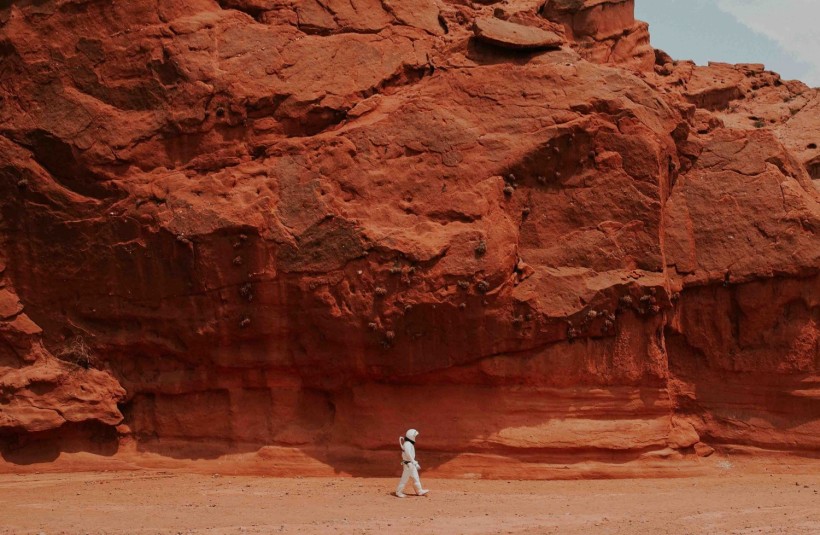The specific home of the oldest Martian meteorite (NWA 7034) has been determined by Curtin's Space Science and Technology Center in the School of Earth and Planetary Sciences, as reported by Phys Org.

(Photo : Nicolas Lobos on Unsplash)
With the use of a multidisciplinary approach that involves a machine-learning algorithm, the new research identified the specific crater on Mars that ejected the meteorite. It weighs 320 grams that were found in northern Africa in 2011.
Researchers have named it after the Pilbara city of Karratha, which is home to one of the oldest terrestrial rocks. However, it is also known as Black Beauty, the only brecciate Martian sample that can be found on Earth. It contains angular fragments of multiple rock types that are cemented together. These characteristics set it apart from other Martian meteorites that have single rock types.
Today, researchers know the geological context of meteorites. Finding where it originated is important as it's the older Martian fragments ever found, aged at 4.48 billion years old.
Black Beauty shows similarities with Mars' very old crust, which is around 4.53 billion years old.
The region that they identified constitutes a true window into the earliest environment of the planets, including Earth.
The researchers used an algorithm that was developed in-house at Curtin, one of the fastest supercomputers in the Southern Hemisphere, at the Pawsey Supercomputing Research Center and the Curtin Hub for Immersive Visualization and eResearch (HIVE).
They analyzed a huge volume of high-resolution planetary images via the machine-learning algorithm to detect impact craters. This has paved the way to find the ejection site of other Martian meteorites to create a more comprehensive view of the geological history of Mars.
The researchers are also adapting the algorithm to unlock other secrets from Mercury and Moon. Doing so will help answer the burning questions that will enable them to further investigate the Solar System and may even assist with the Artemis program to send humans to the moon by the end of the decade.
Also Read: Mars Colonization: New Space Study Claims Humans Can Breathe on the Red Planet With Bacteria's Help
Unraveling Mars
Unraveling Mars' history is a challenging yet exciting scientific pursuit.
Researchers are using advances in technology to help them map and understand what the planets were like when they formed. These projects are in essence of providing a glimpse into the future.
This research is a great example of interdisciplinary collaboration. The researchers are using information technology to develop innovative ways to understand the evolution of the Martian land. This is important as we may be able to harness the wealth of minerals, water, and energy on the planet to help us develop new technologies and ultimately enable us to live in space.
Although there are many significant questions that remain to be answered, making Mars habitable is a realistic goal as Mars is one of the closest planets to Earth.
Related Article: NASA Perseverance Rover Discovers Mysterious Rock on Mars, Scientists Astounded on Formation
This article is owned by TechTimes
Written by April Fowell









